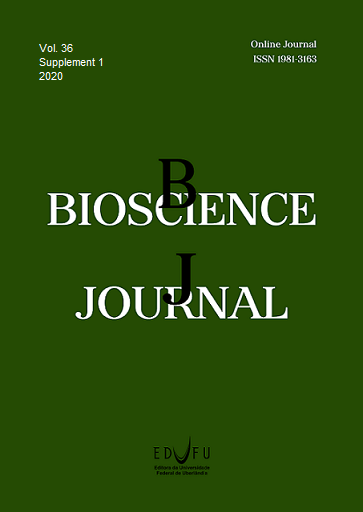Adaptability of quinoa genotypes to altitudes and population densities in Colombia
DOI:
https://doi.org/10.14393/BJ-v36n0a2020-48243Palavras-chave:
Chenopodium quinoa Willd, Early maturity, Sustainable yield, Thermal indexResumo
This work aimed at evaluating and comparing agronomic characteristics of 15 quinoa (Chenopodium quinoa Willd) genotypes cultivated in two altitudes and sowing densities. The experiment initiated by individual plant selection in Brasília, DF, followed by progeny evaluation in Colombia, at 1,100 m and 1,850 m altitude and population densities of 30 and 12 plants m-1, with row spacing of 0,50 m. Eleven progenies and four commercial cultivars were tested. The progenies were obtained by selecting individuals in BRS Syetetuba based on plant height, grain and dry matter yield, harvest index and 1,000 grain weight. The genotypes with the highest grain yield were BRQ 8 (2,283 kg ha-1), Aurora (2,121 kg ha-1) and BRQ 4 (2,043 kg ha-1). In general, the genotypes had early plant cycle, from emergence to physiological maturity of 100-110 days at high plant density for the two altitudes. It is concluded that exploring variability in progenies originated from natural crosses is effective in the adaptation of quinoa to tropical environments. Moreover, genotypes tested in the Cerrado (Brazilian Savannah) maintain the same response relation when evaluated in Colombia.
Downloads
Downloads
Publicado
Como Citar
Edição
Seção
Licença
Copyright (c) 2020 Wilson Anchico; Carlos Roberto Spehar; Michelle Souza Vilela

Este trabalho está licenciado sob uma licença Creative Commons Attribution 4.0 International License.






